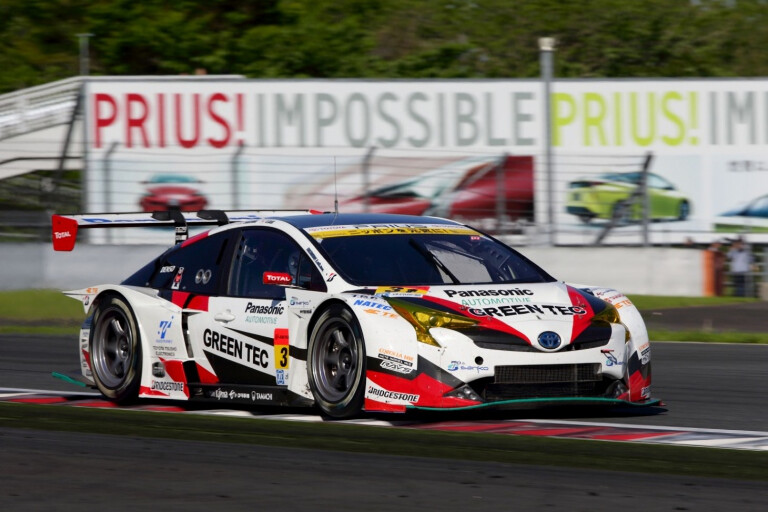
Imagine a racing series where Group C prototypes rubbed shoulders with Ferrari F40s, McLaren F1s along with fire-breathing Toyota Supras and bewinged GT-Rs.
The Japanese Grand Touring Championship, later morphing into SuperGT in 2005, was exactly that. With an impetus on cultivating close on-track racing with strict power and weight limits, while discouraging snowball budgets and single-team/make dominance, there was liberal scope to be found within chassis and engine regulations.
As a result, Japan’s former national championship saw heroes from different eras, different categories and powered by all manner of different engines, coming together to form some of motorsport’s most unique starting grids. Read on as we shine a spotlight on some of the weirdest cars ever to take part in Japan’s JGTC/SuperGT championship.
1994 Lancia 037 ROSSO Competition JGTC
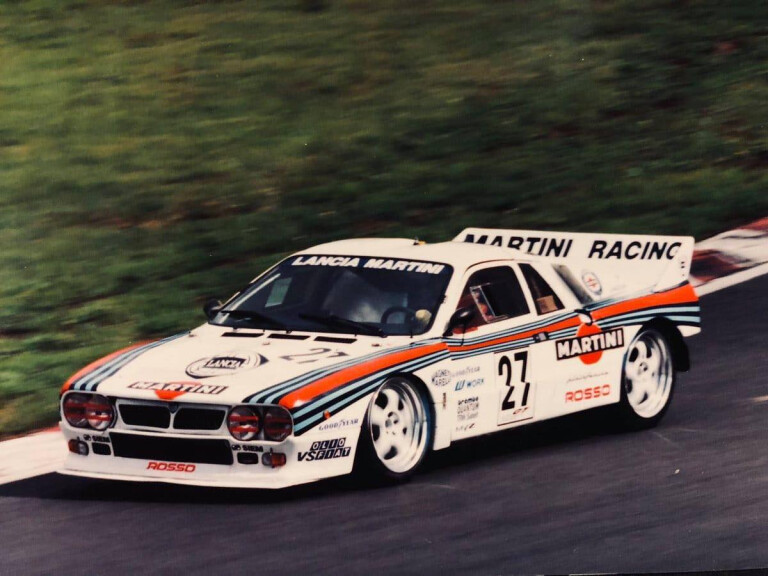
Perfectly illustrating the vaccum in time that was 90s-era JGTC is team ROSSO Competition’s Lancia 037. It completed just one race at the third round of the Japanese GT Championship.
Motorsport historians may note that this is was a full eight years after Group B was disbanded in 1986, which goes some ways as to explaining how this genuine ex-works Lancia 037 founds itself on the manicured tarmac of Fuji speedway.
So how did it do? In a word: poorly.
The Lancia can only be described as a fish out of water. Its short-ratio five-speed gearbox wasn’t suited to circuit use and the engine was never intended to be run at high RPMs for such a sustained period of time.
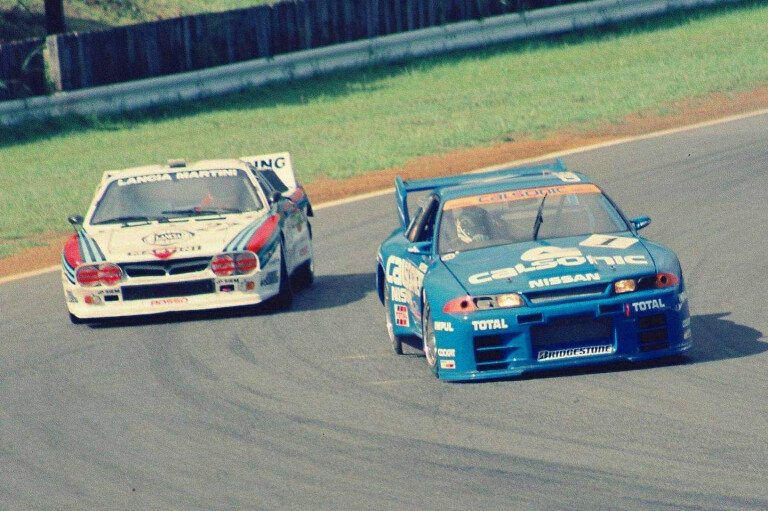
Indeed, its supercharged 2.0-litre Lampredi engine mustered up 242kW and saw the 80s-spec Lancia massively outgunned by the Ferrari F40s, McLaren F1s, Porsche RSRs and Skyline GT-Rs in the top-flight GT1 category.
It didn’t finish last, though, technically. Driven by Naohiro Furuya, the ex-works Lancia finished ninth in class and 12th overall, beating two R32 Skyline GT-Rs that suffered mechanical issues and failed to finish. Ultimately, it finished seven laps behind Team Taisan’s Porsche 962C (more on that later), and never returned to the series. Perhaps a Group 5 Beta Montecarlo would have been a better choice…
1999 Toyota AE86 Sprinter Trueno BP Apex Kraft JGTC
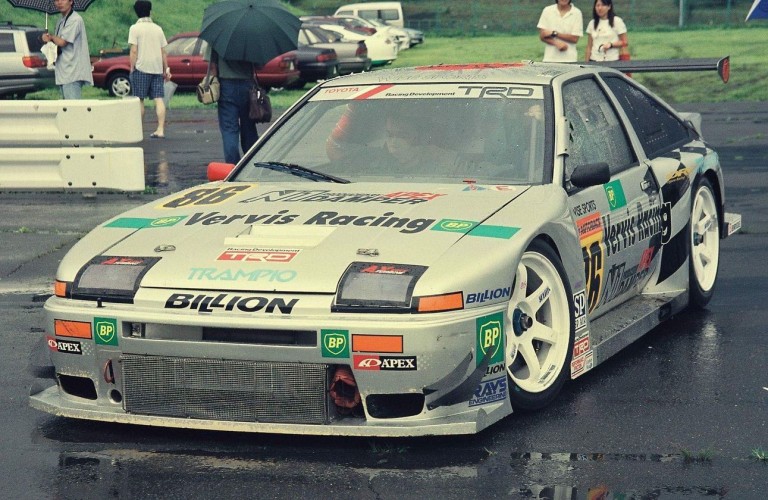
Thought the Lancia 037 was a time-warp? Consider team BP Apex Kraft, who turned up to the 1999 season of JGTC with a 1980s-era AE86 Trueno. That’s a bit like Erebus Motorsport turning up to this year’s Bathurst with a VZ Commodore.
Thankfully, it fared far better than the Group B rally racer did on the circuit with factory-backed support coming from Toyota Racing Development (TRD).
Subsequently, there was a lot more to the humble ‘Hachiroku’ than meets the eye. A 3S-GTE engine, built by TOM’S, powered the car which was reportedly cut, caged and merged with a Dallara F3-99 formula chassis yielding cantilever suspension front and rear.

It was blisteringly quick, and posted several Top Ten finishes throughout the year. Its best result was a 4th place finish at Mine Circuit, Round Four, although persistent mechanical issues prevented any better results.
It was a heroic effort by a privateer team, and gave the factory operations within GT500 genuine competition despite being regarded as a dinosaur. Sadly, it caught fire in 2001 and couldn’t be saved.
BP Apex Kraft was no stranger to weird racers, having previously fielded a front-wheel drive Toyota (read: Chevrolet) Cavalier in 1997. That remains one of only four FWD cars ever to race in JGTC/SuperGT.
1994 Porsche 962C Taisan Starcard JGTC

Team Taisan is a stalwart in Japanese motorsports, having formed in 1983 as a privateer team and owned by the Taisan Industrial Company, a global manufacturer of electronic solenoid pumps.
The team enjoyed much racing success throughout the earlier Group A eras with a battery of Nissan R32 GT-Rs, along with BMW M3s in the lower JTCC series.
Business was clearly booming, as the team rocked up to the 1994 season fielding a Ferrari F40 and an ex-Group C Porsche 962 prototype (chassis 962-164). Consider the absurdity: a genuine Le Mans legend rubbing doors with tin-top GT cars.

It was an impressive show of force, perfectly encapsulating the excess of Japan’s booming economy and well-heeled motoring enthusiasts. Over five rounds, Taisan’s Porsche 962C and Ferrari F40 won one meeting each, although the championship was ultimately won by Masahiko Kageyama in the Calsonic Hoshino Racing GT-R.
2002 Mercedes-Benz CLK500 HKS JGTC
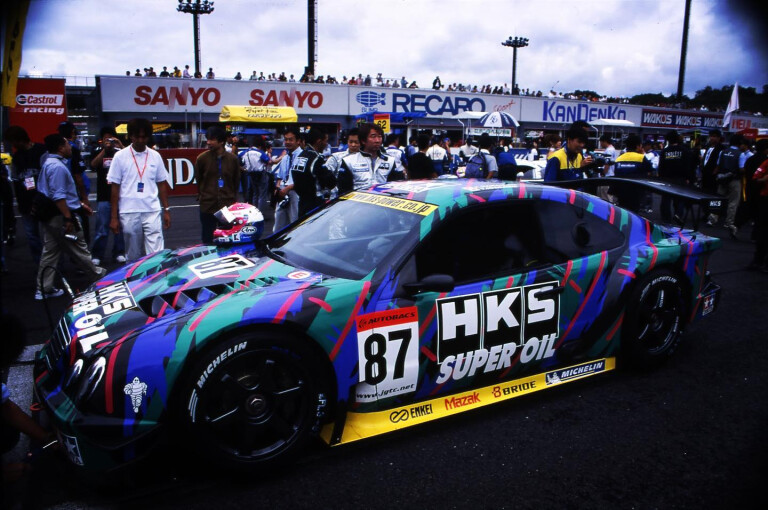
The iconic confetti livery of HKS is best associated with classic Nissans and Toyotas, but the team fielded a C209 CLK in 2002 as the business considered expanding its tuning talents to European cars.
At the heart of the CLK sat Mercedes-Benz’s prolific naturally aspirated M119 V8, measuring 6.0-litres in displacement with power capped at 367kW (or 500ps, as per GT500 regulation).
Although it looks similar to its DTM-racing siblings seen overseas, development for HKS’ CLK500 was an entirely in-house affair.
Alas, the Japanese powerhouse struggled against the larger factory-backed operations run by Nismo (Nissan), Mugen (Honda) and TOM’s (Toyota), and the CLK500 participated in just two race meetings with lacklustre results.
2002 would be the last year of HKS’ participation in JGTC, choosing instead to showcase their mechanical chops via numerous record-breaking time attack, drift and drag cars.
2003 ASL Garaiya Autobacs Racing Team Aguri JGTC

You’ll be forgiven if you haven’t heard of the ASL Garaiya.
The car’s origins actually link back to cult 90s tuner TommyKaira, who ambitiously sought to produce their own low-volume sports car called the ZZ in 1996.
TommyKaira’s project never came to fruition due to persistent financial difficulties, and the Japanese Ministry of Transport added a developmental spanner in the works by switching from Euro to US safety standards in 1999. Ongoing corporate complications at TommyKaira saw the company (and ZZ project) purchased by retail giant Autobacs Seven in 2001.

A single racing version was produced and entered in the GT300 category and was powered by turbocharged SR20VET in its debut season. The SR20 lacked the power to be truly competitive, with the team switching to a VQ V6 the following year, winning the first two race meetings consecutively. They ultimately missed out on the 2004 season championship by a single point.
2012 Toyota Prius APR Racing SuperGT
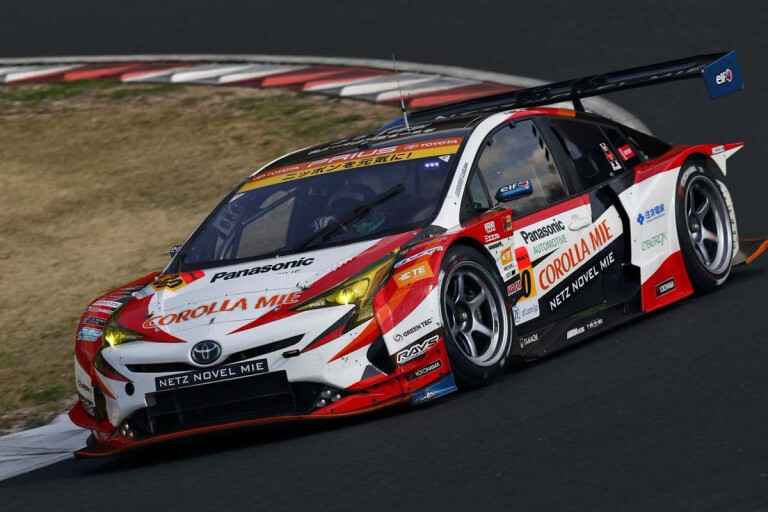
In its road-going guise, the Toyota Prius was a pioneer as the world’s first mass-produced hybrid electric car. In GT300 guise, it was also a hybrid pioneer as the first of its kind ever to take part in SuperGT.
Of course, with Toyota’s flagship Formula Nippon-built 3.4-litre RV8K V8 (this engine would later be used in Toyota’s LMP1 campaign) mid-mounted and restrained by liberal amounts of downforce, this was far from your ordinary hyper-miler.
It did, however, initially retain its factory hybrid assistance system, albeit with a larger battery sourced from the Alpha Prius. In its debut season, it finished on the podium once, but found greater success the following year after a super capacitor-based hybrid system was implemented.
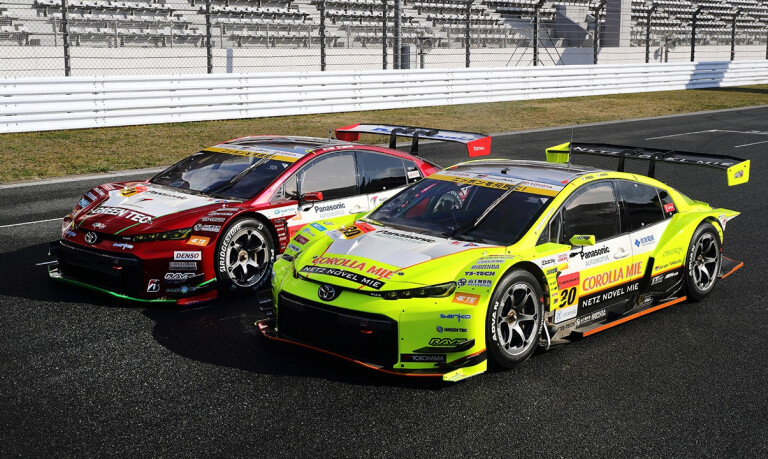
Ongoing reliability issues prevented any chances of a true title run, but the mid-engined Prius posted various podium finishes throughout its career.
Sadly, the period’s JAF GT300 regulations were superceded at the end of 2015, morphing closer to GT3 regulations and decreeing that competitor engines must be placed in the same location as their road-going counterparts.
APR Racing returned with the new-look Prius, and a front-mounted RV8K V8, in 2016 but it’s the older whacky one that we miss the most.
1998 Subaru Impreza GF8 WRX SYMS/Advan JTCC
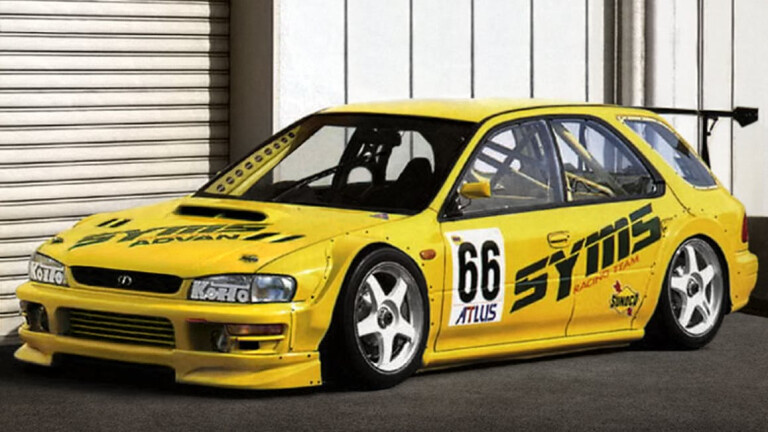
The yellow bus is an honourary inclusion, as the SYMS WRX wagon never raced within the JGTC/SuperGT series, instead taking part in the JTCC (Japanese Touring Cars Championship) that adopted Supertouring regulations after JGTC was formed in 1993.
Why is it here? Because the world needs more wagon-based race cars.
1998 was the final year of the JTCC which, by this point, suffered dwindling manufacturer support. Nissan had left due to ongoing financial issues, and Honda left to divert its attention to its F1 program and its (surprisingly cheaper) JGTC NSX campaign. Toyota remained the only OEM works team, filling the grid with all manner of Coronas and Chasers. One of the few privateer entries, however, was Subaru tuner SYMS who fielded two Impreza wagons in 1998.
The wagon body shell was chosen for its visibility advantages, and shifted through a six-speed sequential transmission sending power exclusively to the rear wheels. Its 2.0-litre quad-cam 16-valve EJ20 engine presented in aspirated configuration, as per regulations, with power quoted around 220kW.
Alas, SYMS’ WRX wagon racer only saw competition for the first three races of the 1998 JTCC season. Its racing ambitions fell short, however, finishing last in the first two races, and posting a DNS at the third meeting at Sugo Sportsland, after which SYMS Racing Team withdrew from the series.
Underwhelming race results aside, we can all agree on just how cool it looks.

COMMENTS